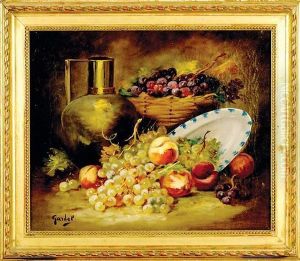Gardel Paintings
Carlos Gardel was born on December 11, 1890, in Toulouse, France, though he would become the most iconic figure in the history of Tango, an emblematic Argentine musical genre. His birth name was Charles Romuald Gardes, but he is universally known by his stage name, Carlos Gardel. At a young age, Gardel moved to Buenos Aires, Argentina, with his mother, where he grew up in the Abasto neighborhood, a place that would later become closely associated with his name and legacy. Gardel's early life was humble, and he immersed himself in the local culture, which was a melting pot of European immigrants and native influences. This unique blend shaped his musical talents and his future career.
Gardel's music career began in bars and at small gatherings, where he initially performed a wide range of music. However, his focus shifted to Tango, a genre that was gaining popularity in the early 20th century. Gardel's smooth baritone voice and charismatic stage presence quickly made him a standout performer. He is credited with transforming Tango from a dance-focused music into a vocal genre with his innovative compositions and performances. Gardel composed and performed numerous tangos, many of which have become classics of the genre, such as 'Mi Buenos Aires querido', 'El día que me quieras', and 'Volver'.
His contribution to Tango extended beyond Argentina's borders, making him an international star. Gardel toured extensively throughout the Americas and Europe, bringing Tango to a global audience. His charm and talent made him particularly popular in countries like France, Spain, and the United States. In addition to his music career, Gardel also starred in several films, which helped to cement his status as a cultural icon. His films were instrumental in popularizing Tango music and dance around the world.
Tragically, Carlos Gardel's life was cut short when he died in an airplane crash in Medellín, Colombia, on June 24, 1935. His death was mourned worldwide, and he became a legend, often referred to as 'El Zorzal Criollo' (The Creole Thrush). Today, Gardel's legacy continues to thrive, with his music still widely listened to and revered. His contribution to the development and internationalization of Tango has made him an enduring figure in the world of music and culture. Memorials, statues, and museums dedicated to his memory can be found across Argentina and in other parts of the world, a testament to his lasting impact on the cultural heritage of Tango.
